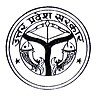北方邦
| 北方邦 उत्तर प्रदेश | ||
|---|---|---|
| 印度的邦 | ||
 从南面看泰姬陵 | ||
| ||
 北方邦在印度的位置 | ||
 北方邦地图 | ||
| 坐标 (勒克瑙):26°50′49″N 80°56′49″E / 26.847°N 80.947°E坐标:26°50′49″N 80°56′49″E / 26.847°N 80.947°E | ||
| 国家 | ||
| 建立时间 | 现代:1805年(作为割让和占领的省) | |
| 历史 | ||
| 首府 | 勒克瑙 | |
| 县 | 75 [1] | |
| 政府 | ||
| • 行政机构 | 印度政府,北方邦政府 | |
| • 邦长 | 阿南迪本·帕特尔(2019年上任) | |
| • 首席部长 | 约吉·阿迪亚纳斯(印度人民党,2017年上任) | |
| • 立法机关 | 两院制(404 + 108席) | |
| • 人民院选区 | 80 | |
| • 高等法院 | 安拉阿巴德高等法院 | |
| 面积 | ||
| • 总计 | 243,286 平方公里(93,933 平方英里) | |
| 面积排名 | 第4位 | |
| 人口(2011年)[1] | ||
| • 总计 | 199,581,477人 | |
| • 排名 | 第1位 | |
| • 密度 | 820人/平方公里(2,125人/平方英里) | |
| 居民称谓 | Uttarpradeshi | |
| 时区 | IST(UTC+05:30) | |
| UN/LOCODE | IN-UP | |
| ISO 3166码 | IN-UP | |
| 车辆号牌 | UP 01—XX | |
| HDI | ▲ 0.596(low) | |
| HDI rank | 第35位(2018年) | |
| 识字率 | 67.68% 77.28%(男性) 57.18%(女性) | |
| 官方语言 | 印地语 英语 乌尔都语 | |
| 网站 | upgov.nic.in | |
 | ||
北方邦(印地语:उत्तर प्रदेश,罗马化:Uttar Pradesh)处于印度北部,和尼泊尔接壤,毗邻国内的北阿坎德邦、喜马偕尔邦、哈里亚纳邦、拉贾斯坦邦、中央邦以及比哈尔邦。人口2亿,是印度人口最多的邦,亦是世界人口最多的一级行政区。北方邦成立于1937年4月1日,当时是英治期间的阿格拉和乌德联合省,并于1950年更名为北方邦。该州分为18个分区和70个县,首府为勒克瑙。印地语和乌尔都语是北方邦最广泛使用的语言,也是该州的官方语言。北方邦面积243,290平方公里,占印度的7.34%,面积上是印度第四大邦。
地理[编辑]
北方邦境内有数条河流和运河,南部边界多山,但大部分土地为低洼的冲积平原。土地的灌溉主要依靠雨水、地下水、水井及河流的堰堤。气候温和,一年两收,主要收成有小麦、蔗糖、大米、小米、黄麻、烟草及棉花等。建筑用石及玻璃工业用的高质量沙石产量充足。铁路公路四通八达,亦有多所大学。官方语言为印地语及乌尔都语。
历史[编辑]
北方邦于1833年称孟加拉管区,不久分为亚格拉省及阿瓦德省两省。1877年处于统一治理之下。1902年称亚格拉与阿瓦德省,1935年时改名联合省,1950年改现名。
人口[编辑]
北方邦人口众多,人口增长率高。从1991年到2001年,人口增长26%以上。[2]北方邦是印度人口最多的邦,2011年即已接近2亿人,[3]占印度人口的16.2%。人口密度为每平方公里828人,也是印度人口最稠密的邦。[4]北方邦拥有印度最大的表列种姓和表列部落。[5][6]
2011年的性别比例为912名女性对1000名男性,低于全国943的数字。[7]该州2001-2011年的十年人口增长率为20.1%,高于全国的17.64%。[8][9]人口中有许多仍生活在贫困线以下。[10]根据世界银行2016年文件,该州的减贫步伐慢于全国其他地区。[11]印度储备银行发布的2011-12年度估计显示,北方邦有5900万人处于贫困线以下,为全印度最多。[10][12]尤其是中部和东部地区的贫困比例非常高。根据印度政府计划执行部的统计报告(2020年1月7日发布),该州人均收入低于每年8,000卢比(110美元)。[13]
2011年的人口普查显示,印度人口最多的北方邦是印度教徒和穆斯林人数最多的邦。[14]按宗教划分,2011年印度教徒占79.7%,穆斯林占19.3%,锡克教徒占0.3%,基督宗教 徒占0.2%,耆那教徒占0.1%,佛教徒占0.1%,其他占0.3%。[15]国家统计局(NSO)调查报告显示,北方邦的识字率为73%,低于77.7%的全国平均水平。该州农村地区男性识字率为80.5%,女性为60.4%,而城市地区男性识字率为86.8%,女性为74.9%。[16]
印地语是北方邦的官方语言,大多数人口(80.16%)都使用印地语。[17]但大多数人用地方语言。其中包括在北方邦中部的阿瓦德说的阿瓦德语,在北方邦东部的普万查尔说的博杰普里语,以及在北方邦西部的布拉吉地区说的布拉吉巴沙语。乌尔都语被赋予第二官方语言的地位,有5.4%的人口使用。[17][18]该州其他语言包括旁遮普语(0.3%)和孟加拉语(0.1%)。[18]
政治[编辑]
议会[编辑]
邦议会为两院制:上院100席,下院403席。
行政区划[编辑]
北方邦分为18个专区,辖有70个县。首府是勒克瑙。
北方邦专区[编辑]
北方邦的县[编辑]
经济[编辑]
北方邦经济以农业为主,北方邦为印度最大的粮食产地。工业集中于蔗糖和棉花加工业,产有纸张、化学品、纺织品、食用油、皮革、手工针织品及糖。矿产有煤、叶腊石、磷灰盐、石灰石、铜、硅石及铝矾土。
经济近况[编辑]
主要经济走向[编辑]
下表是表示北方邦邦内生产总值 估计由印度统计和计划部门所公布的资料,单位为百万印度卢比。
| 年份 | 北方邦邦内生产总值 |
|---|---|
| 1980年 | 155,540 |
| 1985年 | 277,480 |
| 1990年 | 555,060 |
| 1995年 | 1,062,490 |
| 2000年 | 1,730,680 |
^ 包括北阿坎德邦,于2000年脱离北方邦,成为印度第27邦。
名胜古迹[编辑]
北方邦有许多名胜古迹,如印度教萨帕塔普里(七圣城)之首瓦腊纳西、泰姬陵等。
桑伽施为佛教八大圣地之一,相传为佛陀由忉利天返回之处,西部法鲁卡巴德地区的卡瑙季(Kanauj),《大唐西域记》称之为曲女城,戒日王曾于曲女城为玄奘举办无遮大会确立了“真唯识量”,还记载了与无著和世亲论师有关的古城阿约提亚。
参考文献[编辑]
- ^ 1.0 1.1 Statistics of Uttar Pradesh. Census of India 2011. UP Government. 1 March 2011 [31 July 2012]. (原始内容存档于2012年4月26日).
- ^ "The density of population in U.P." Environment and Related Issues Department U.P. Archived from the original on 15 December 2012. Retrieved 23 July 2012.
- ^ "Provisional population totals" (PDF). Census of India 2011. Archived (PDF) from the original on 7 February 2013. Retrieved 23 July 2012.
- ^ "Statistics of Uttar Pradesh". up.gov.in. Government of Uttar Pradesh. Archived from the original on 12 April 2017. Retrieved 12 April 2017.
- ^ "Scheduled castes and scheduled tribes". Office of the Registrar General & Census Commissioner, India. Retrieved 12 June 2020.
- ^ Kaul, Sudesh. "Indigenous Peoples Policy Framework" (PDF). World Bank. Retrieved 12 June 2020.
- ^ "Census 2011 (Final Data) – Demographic details, Literate Population (Total, Rural & Urban)" (PDF). planningcommission.gov.in. Planning Commission, Government of India. Archived from the original (PDF) on 27 January 2018. Retrieved 3 October 2018.
- ^ "Decennil growth of population by census" (PDF). Census of India (2011). Archived from the original (PDF) on 10 April 2009. Retrieved 5 October 2011.
- ^ "Decennial growth rate and density for 2011 at a glance for Uttar Pradesh and the districts: provisional population totals paper 1 of 2011". Census of India(2011). Archived from the original on 7 October 2011. Retrieved 5 October 2011.
- ^ 10.0 10.1 "The state with large no. of peoples living below poverty line". Government of India. Press Information Bureau. Archived from the original on 8 February 2013. Retrieved 5 October 2012.
- ^ "Uttar Pradesh Poverty, Growth & Inequality" (PDF). World Bank. Archived (PDF) from the original on 16 November 2017. Retrieved 23 May 2020.
- ^ "Press Note on Poverty Estimates, 2011–12" (PDF). Planning Commission. Government of India. Archived from the original (PDF) on 28 June 2014. Retrieved 11 August 2014.
- ^ Singh, Hemant (7 April 2020). "Per Capita Income of Indian States 2019–20". Dainik Jagran. Jagran Josh. Jagran Prakashan Limited. Archived from the original on 26 August 2019. Retrieved 23 May 2020.
- ^ "Muslim population grew faster: Census". Archived from the original on 27 August 2015.
- ^ "C1 – Population by religious community, Uttar Pradesh". Census India 2011. Archived from the original on 27 September 2015. Retrieved 10 September 2011.
- ^ "UP literacy rate poor than national average: Report". Hindustan Times. HT Media Ltd. 8 September 2020. Retrieved 20 June 2021.
- ^ 17.0 17.1 "Report of the Commissioner for linguistic minorities: 52nd report (July 2014 to June 2015)" (PDF). Commissioner for Linguistic Minorities, Ministry of Minority Affairs, Government of India. pp. 49–53. Archived from the original (PDF) on 15 November 2016. Retrieved 16 February 2016.
- ^ 18.0 18.1 "Language – India, States and Union Territories" (PDF). Census of India 2011. Office of the Registrar General. pp. 13–14. Archived (PDF) from the original on 14 November 2018. Retrieved 21 November 2018.
| ||||||||||||||||||||||||||
| ||||||||||||||||||||||



